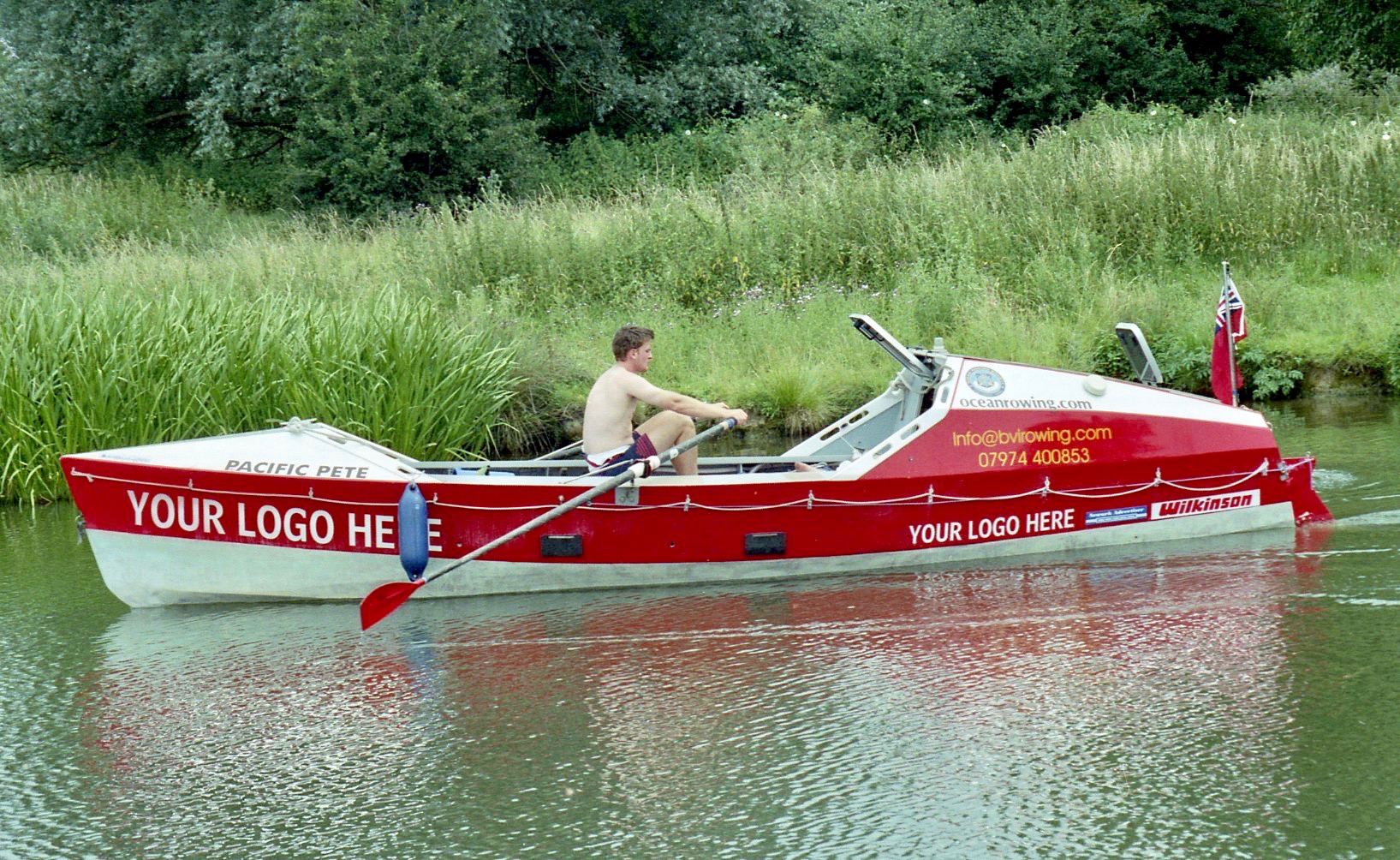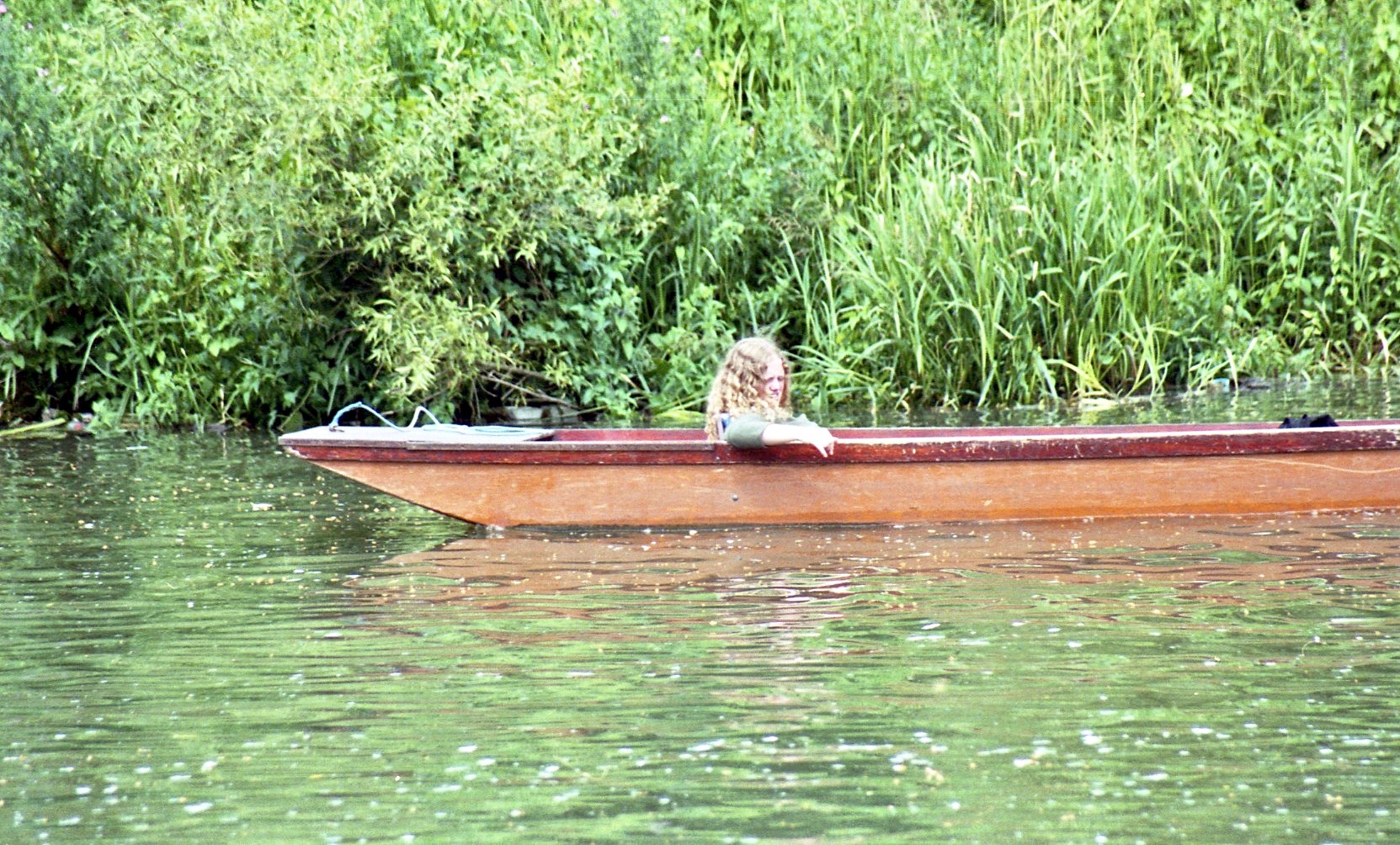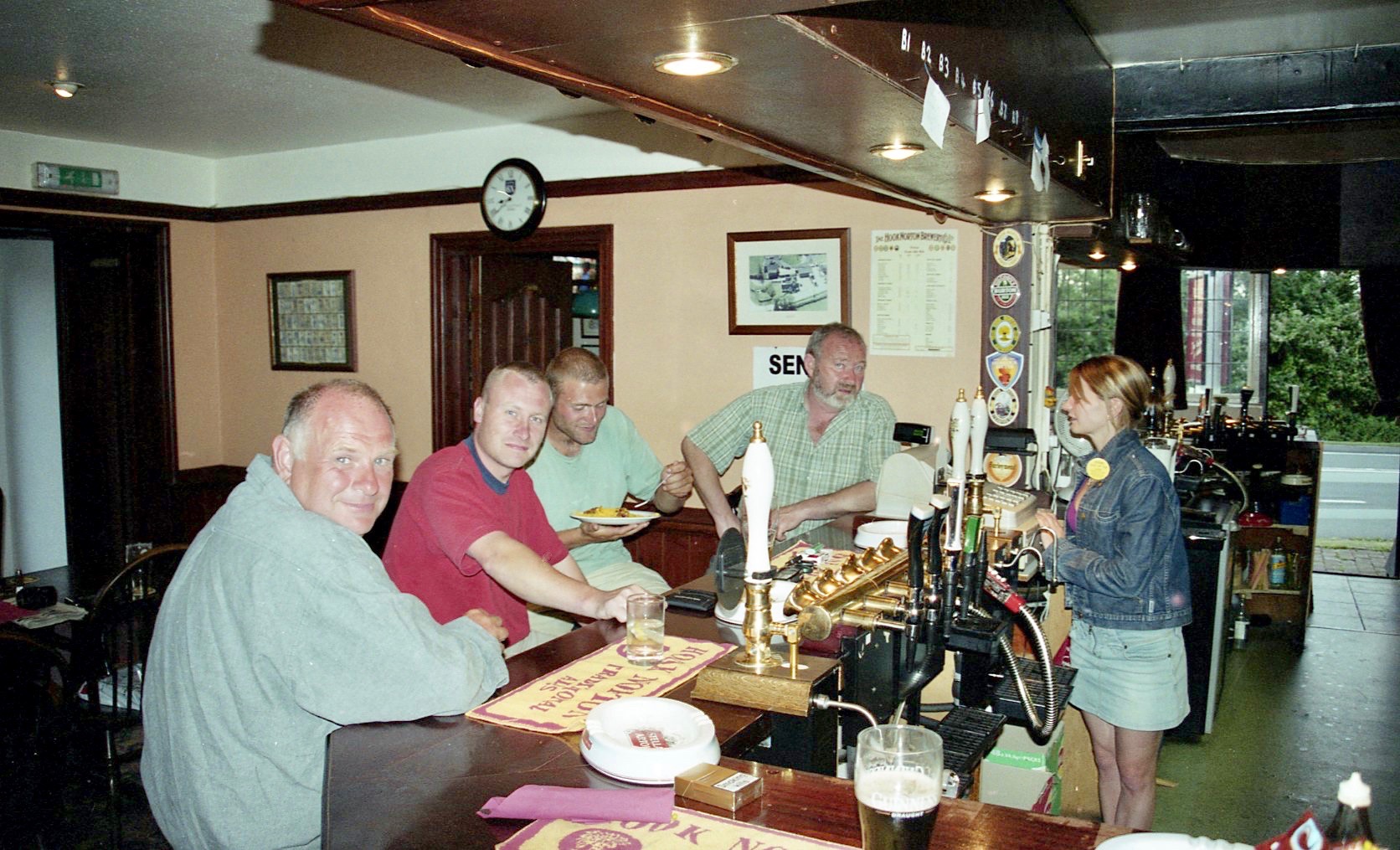I continued tracking my son along the Oxford Canal into July 2003,


beside landscaped abstracts of furrowed fields.
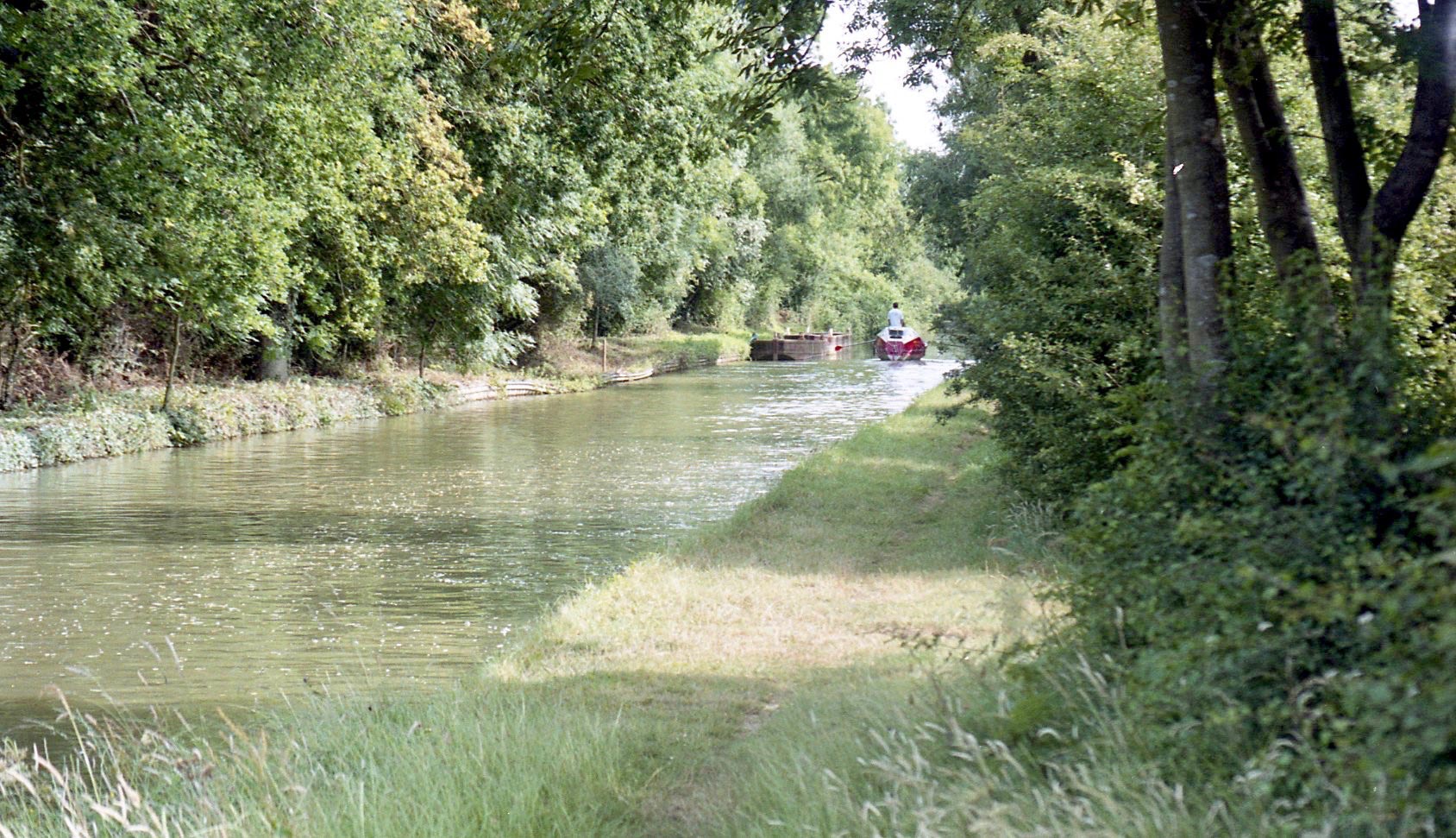
Beyond Oxford, Sam took to the Grand Union Canal

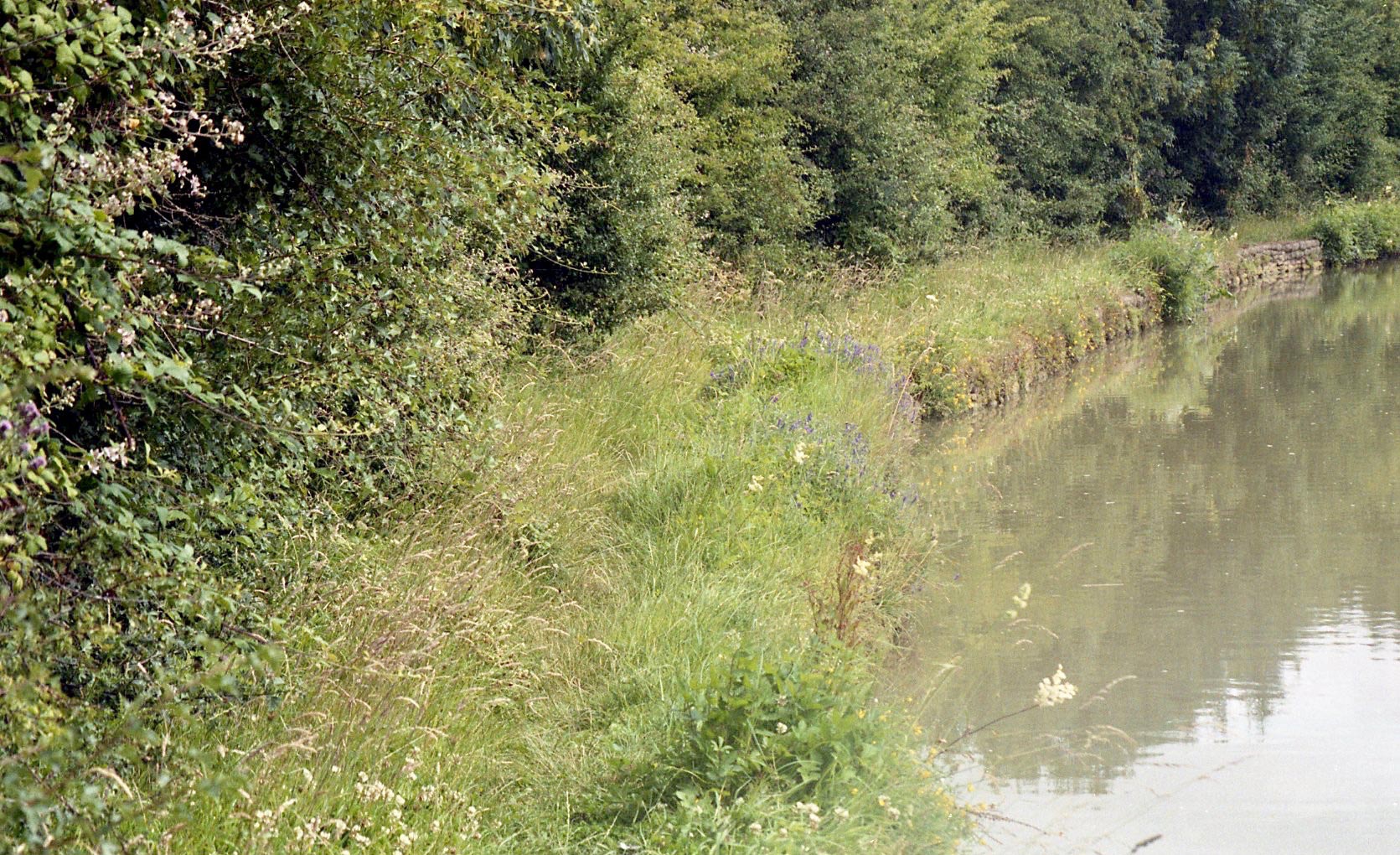

alongside which the footpaths were often completely overgrown, albeit


with pleasant wild flowers, such as meadowsweet and willow herb.



The many butterflies flitting about included gatekeepers, red admirals, and ringlets.

The shade from trees like this oak was often welcome in the heat of the day.
About the Foxton Flight of Locks, built between 1810 and 1814, Wikipedia informs us:
‘Foxton Locks (grid reference SP691895) are ten canal locks consisting of two “staircases” each of five locks, located on the Leicester line of the Grand Union Canal about 5 km west of the Leicestershire town of Market Harborough and are named after the nearby village of Foxton.
They form the northern terminus of a 20-mile summit level that passes Husbands Bosworth, Crick and ends with the Watford flight
Staircase locks are used where a canal needs to climb a steep hill, and consist of a group of locks where each lock opens directly into the next, that is, where the bottom gates of one lock form the top gates of the next. Foxton Locks are the largest flight of such staircase locks on the English canal system.
The Grade II* listed locks are a popular tourist attraction and the county council has created a country park at the top. At the bottom, where the junction with the arm to Market Harborough is located, there are two public houses, a shop, trip boat and other facilities.’
On the day Sam guided Pacific Pete down this staircase, family visitors were out in force. For once I was ahead of my son, and reached the locks in time to learn that the canal-side telegraph was buzzing with the news that a large rowing boat was on its way through.
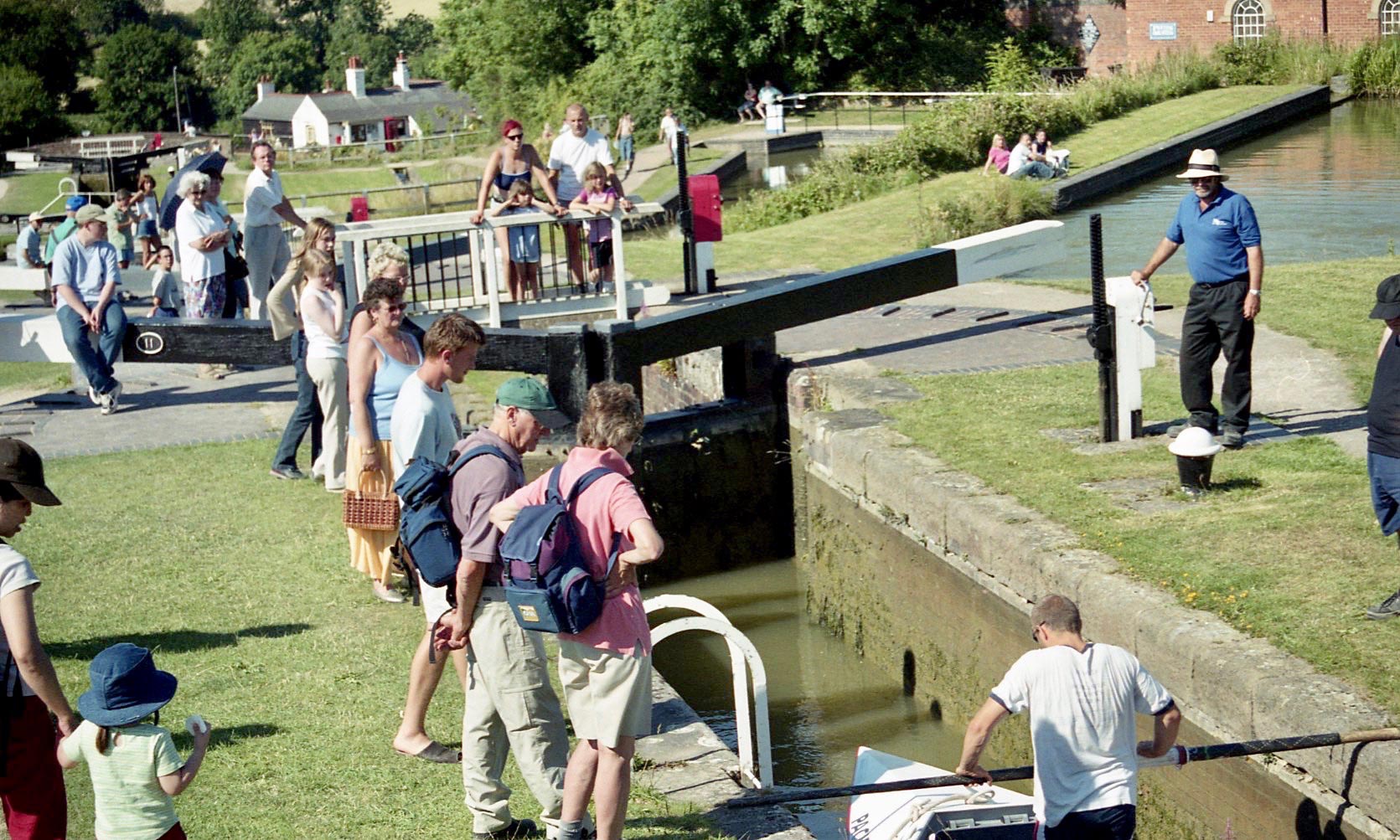
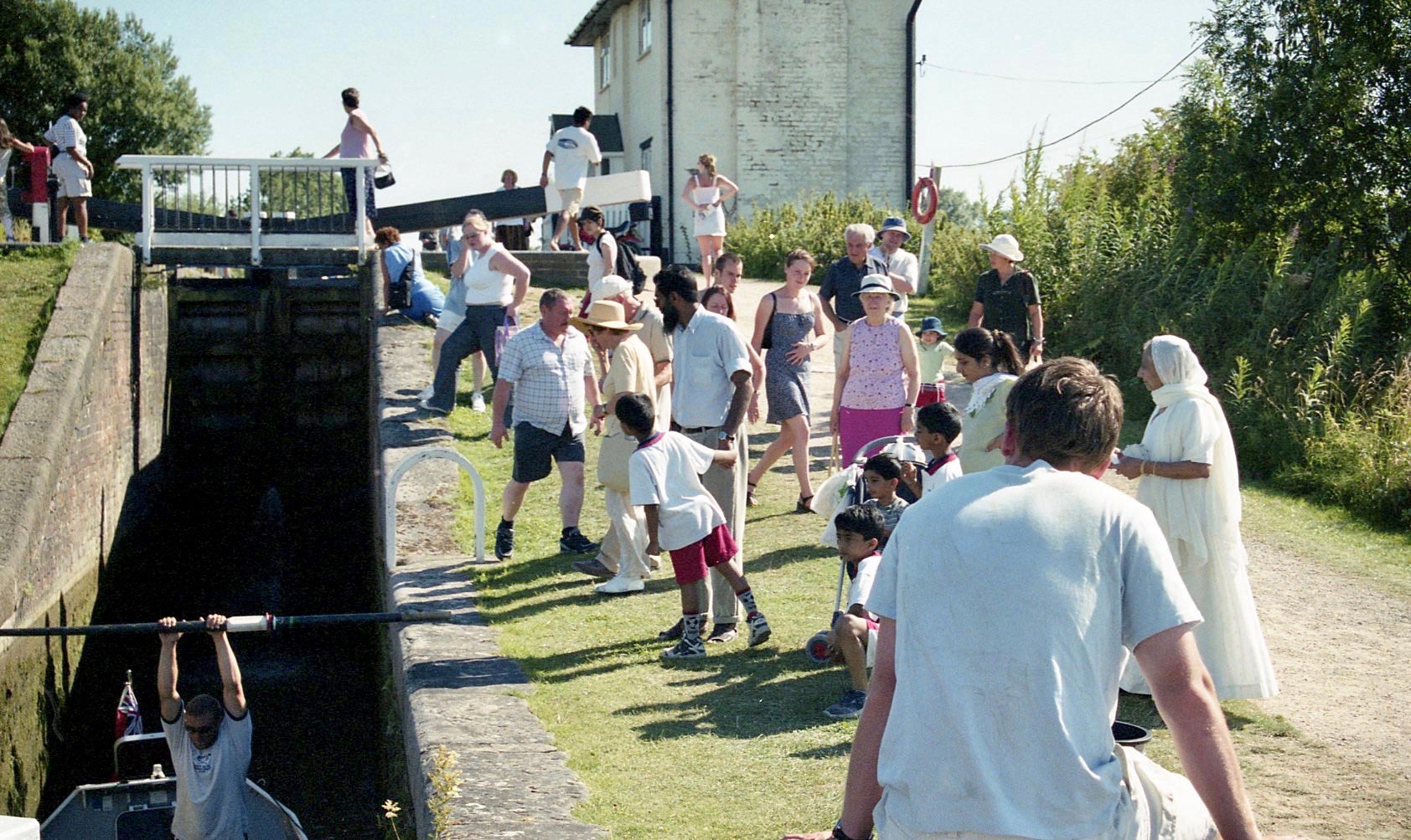



The audience gathered to watch Sam use his giant oar to steer and propel the boat through the locks where there was no room to row.

Did you notice the Asian man gesturing to his family in the third picture, and shepherding them over the bridge in the last, in order to lead them down the slope to see the rower on his way?

There had been no shortage of helpers to push the long balance beams operating the gates.


There were plenty of narrow boats on the waters, but no other ocean-going rowing boats.
